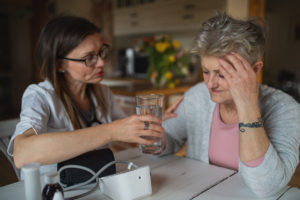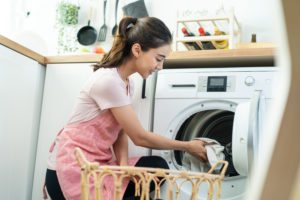How Goals and Routines Connect
Managing the Routines of Daily Living
Goal Guide helps individuals with cognitive disabilities set goals, track progress, and share their accomplishments with others. In the course of developing Goal Guide we’ve spent a lot of time thinking about the relationship between goals and routines of daily living.
Field, Martin, Miller, Ward, and Wehmeyer (1998) suggested that to become self-determined, students with disabilities need opportunities to learn and practice strategies to attain their annual transition goals. Asking individuals to identify and articulate their personal transition goals is often unrealistic, however, because many youth with intellectual and developmental disabilities (IDD) do not conceptually understand the process.
By definition, a routine is a repeatable sequence of actions needed to perform commonplace tasks or activities, whereas a goal is more typically a desired outcome resulting from accomplishment of one or more routines. Developing and completing routines is therefore integral to setting and attaining goals. Understanding the similarities and differences between routines and goals is key to using Goal Guide, from the initial configuration to the long-term collection and analysis of data.
For instance, daily living consists of many different routines related to things like personal care, cooking, and household management. Being able to live on one’s own, however, is a goal that depends on the successful execution of these routines. For example, if the goal is to have good oral health, there are routines for flossing and brushing twice a day that will lead to that goal, with each of those routines consisting of the multiple steps of a task analysis. In turn, completing daily routines related to oral hygiene may also help with goals for improving employability and personal relationships.
As developers and educators, there are a couple of important implications that flow from this discussion:
- There are many independent living skills where well-crafted routines (task analyses) could be helpful to other Cognitopia users. These routines could be shared or saved for future re-use by individual users or replicated for a group of students to track their activities of daily living and independent living skills. Look for a user forum/open source portal for sharing information and community collaboration in a future iteration of Goal Guide.
- From a design perspective, it’s important that the user interface for goal creation and tracking have a consciously-crafted teaching function that clearly communicates the relationship between goals and routines. The application can thus incorporate a curriculum for teaching not only how to use Goal Guide but to understand the foundational concepts that enable self-directed goal management. We are actively working toward development of curriculum and instruction to facilitate student understanding and participation in goal management. So here too, stay tuned.
About the Authors: This blog post was written collaboratively between Tom Keating, CEO of Cognitopia and Tobias Rickard, Autism Consultant with the Eugene 4J school district.
Wehmeyer, M. L., Agran, M., & Hughes, C. (1998). Teaching self- determination to students with disabilities: Basic skills for successful transition. Baltimore: Paul H. Brookes.
Credit Feature Photo: Ludosphère, Creative Commons, Flickr
Tom Keating, Ph.D. is founder and CEO of Cognitopia, home of the Cognitopia Platform for Self-Determination, emphasizing tools for IEP self-direction, goal management, task analysis, and team coordination. Keating has been focused for the past 20 years on research and development of self-management and community living applications for individuals with cognitive disabilities and has been principal investigator on over 20 federally-funded technology development projects. He is also a Courtesy Research Associate in the Computer and Information Sciences Department of the University of Oregon. Keating’s perspective in all of his work has been strongly influenced by his experience of 31 years as a primary supporter for a brother who experienced autism.



